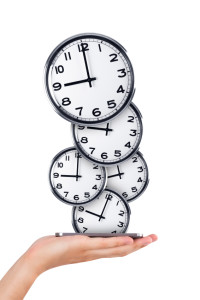
Learning to analyze movement takes time. Because at least 60% of human communication is estimated to be nonverbal and behavioral, everyone has developed his or her own way of seeing and coding movement. That is, everyone possesses body knowledge and body prejudices. Learning to observe movement objectively using Laban’s taxonomy of effort and space necessitates setting aside pre-existing approaches.
In my own development as a movement analyst, I found I “went blank” for a while when first attempting to observe a movement event. I felt as if I wasn’t getting any information or seeing anything, and this was quite disturbing. Gradually I realized that blank period served a purpose. It gave me time to set aside my customary ways of seeing movement. And this readied me to put on my Laban glasses.
Analyzing movement is like any other physical activity – one needs time to warm up. Warming up has two elements. First, the observer needs to relax, to let go of preoccupations and to go blank, in a sense.
Secondly, the observer needs to begin to focus attention on the movement event to be observed. This initial focus can be soft and fuzzy, a kind of attuning to the movement without attempting to be analytical and precise. Because movement perception involves multiple senses there are many ways for student observers to attune. Several practical ways to attune are demonstrated in the video chapters of Beyond Words.
Attuning opens the gates of movement perception in a gentle way. So my first tip: don’t ask students to see a movement only once and analyze it. Give them some time to warm up, to relax, and to attune to the movement.
